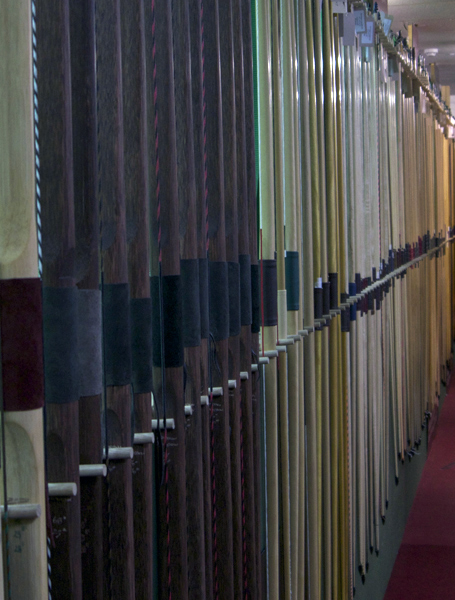Q: I am a relatively new archer and would like to make myself a longbow. A friend in the club has a lovely osage longbow so I would like to make one like it from a kit, but how much will it cost me? Can you also make the kit suitable for a 45lbs at 28” bow?
A: As a manufacturer of longbows we are often asked by trade customers if we could supply a ‘Do It Yourself’ longbow kit, but for obvious reasons this became known as the ‘Destroy It Yourself’ longbow. This might not be entirely fair, as some people do make a plausible bow from our laminated staves. However, making a longbow from a stave is still a very difficult undertaking for a number of reasons, as you need to master a lot of skills that aren’t common in most forms of woodworking, and the level of accuracy required is quite high, because wood under stress reacts very differently from wood that just sits there, like a coffee table.
So while I do encourage interested people to have a go at making a bow, I also point out a few things before they start.
Before you start to try to make a bow you need to study finished and working examples really carefully and then, as you are working, you need to try to spot the importance of the shaping in specific areas as you work. No part of a longbow is the shape it is by accident. Everything has to work in harmony and abrupt changes in shape will always result in failure, so subtle changes are important, but they are also difficult to spot.
There is an old engineering saying that if it looks right it probably is, and that is certainly true of the finished curve of a longbow at full draw, but to achieve that shape at full draw there are subtle changes to the shape and profile of the stave along its length that make it bend as it should.
So at the first attempt there is a lot to take on board, a lot of new skills to learn, and you need to learn the cause and effect of removing wood. You also need to get used to the fact that you can remove wood and put the bow back onto the tiller and there does not appear to be any change in the shape, so you remove more wood, then the change becomes visible and you realise you’ve removed too much.
On your first go you might make a plausible bow, though it is likely to be a lot lighter than you wanted, and have more string follow that you would like. Some people give up at this point, but others are hooked and want another go.
When I made my first longbow I was aiming for a 50lb bow – the stave would have made it, but by the time the bow was bending properly and in tiller it was under 40lbs. My second attempt was 43lbs, the third around 48lbs, and so on. Each bow was a reasonably good bow, but achieving both the draw weight and a good bow at the same time was not easy.
I found it a whole lot harder to make a 60lb bow as the increased stresses on the wood meant that it responded differently as you removed quite small amounts of wood. A heavier bow is a more delicate job, which is not what you might have expected.
Then I moved onto using Osage in bow making – that was a wake-up call! Osage really is a wood with attitude, and if you were having difficulties with a lemonwood stave, welcome to your worst nightmare.
So my best advice is: If you want a good bow get a professional to make it for you, and let him experience the problems but get the bow you ordered at the price you agreed. If you fancy making a bow, approach it as a completely separate hobby from your archery – potentially an expensive hobby as you could produce more firewood than bows. Only good quality wood will make a good quality bow, and good quality bow wood is expensive and not easy to find. Cheap wood will not make a worthwhile bow, and you do not learn much about how to work better quality wood. Having said that, there is only one guaranteed way to fail to make a bow, and that is not to start. But if you do decide to have a go and get hooked, be prepared to throw both money and time at it because it might be your 12th bow that is the one you wanted.
Pip Bickerstaffe
The Glade Ask The Experts – In association with Fairbow



